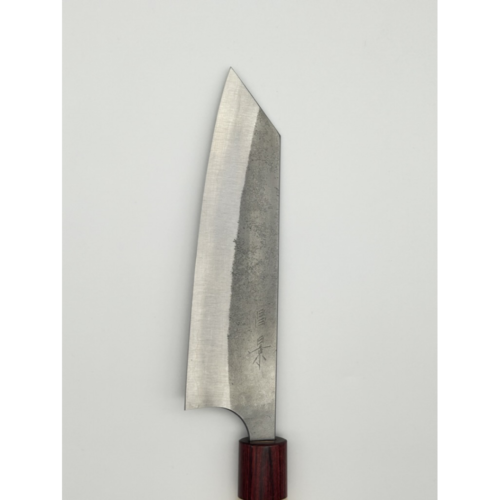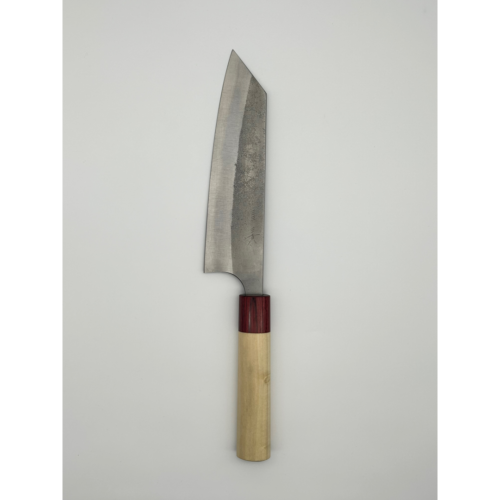 Identifying a Bunka knife among the vast array of Japanese knives is relatively straightforward once you know its key features. Bunka knives typically feature a tall blade with a relatively flat profile, making them versatile for chopping, slicing, and dicing. The pointed tip allows for intricate tasks and precise cutting, reminiscent of a chef’s knife. The spine of the Bunka knife often has a slight curve, enhancing the rocking motion commonly used in Western-style cutting techniques.
Identifying a Bunka knife among the vast array of Japanese knives is relatively straightforward once you know its key features. Bunka knives typically feature a tall blade with a relatively flat profile, making them versatile for chopping, slicing, and dicing. The pointed tip allows for intricate tasks and precise cutting, reminiscent of a chef’s knife. The spine of the Bunka knife often has a slight curve, enhancing the rocking motion commonly used in Western-style cutting techniques.
Unlike some other Japanese knives, the Bunka knife often has a wider blade with a more substantial belly. The blade can be single-beveled (for right- or left-handed use) or double-beveled, catering to different cutting preferences. The grind of the blade may vary, but a common feature is a prominent tip, allowing for intricate work.
The Bunka knife traces its roots to Japan, where it has been a staple in traditional Japanese kitchens for centuries. Originating from the Edo period, this knife was initially crafted for general-purpose use, allowing users to perform a wide range of tasks with precision and ease. The name “Bunka” itself translates to “culture,” reflecting the knife’s role in culinary arts and everyday cooking.


















